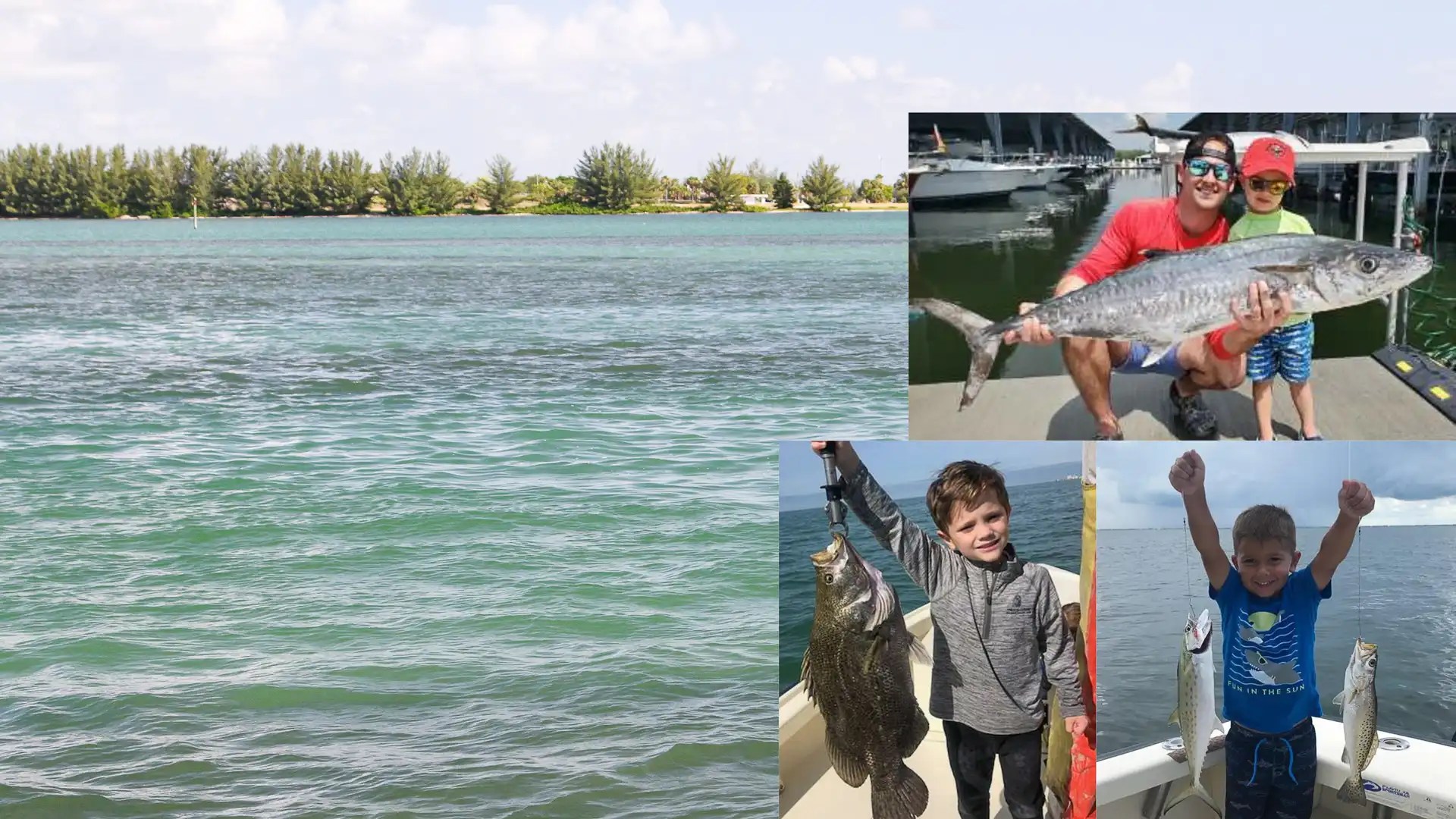
Capt. Billy Miller has guided anglers to giant tarpon, monster snook and reel-screaming kingfish. The Tampa, Fla., guide has also led moms, dads and their young anglers to banner days of nearly nonstop action with smaller, more cooperative species.
While most anglers aspire to pursue those flashy, big-name species, it’s the subtle lessons learned in a relaxed, no-pressure scenario that ultimately make such dreams possible. This truth prompted Miller to design a plan that’s easily replicated and applied wherever young and/or novice anglers fish.
He calls it Family Fun Fishing — a very particular approach he takes when guiding customers with more enthusiasm than actual fishing ability. The concept applies equally to anyone new to fishing, but Miller’s keenly aware of the importance of including the entire family.
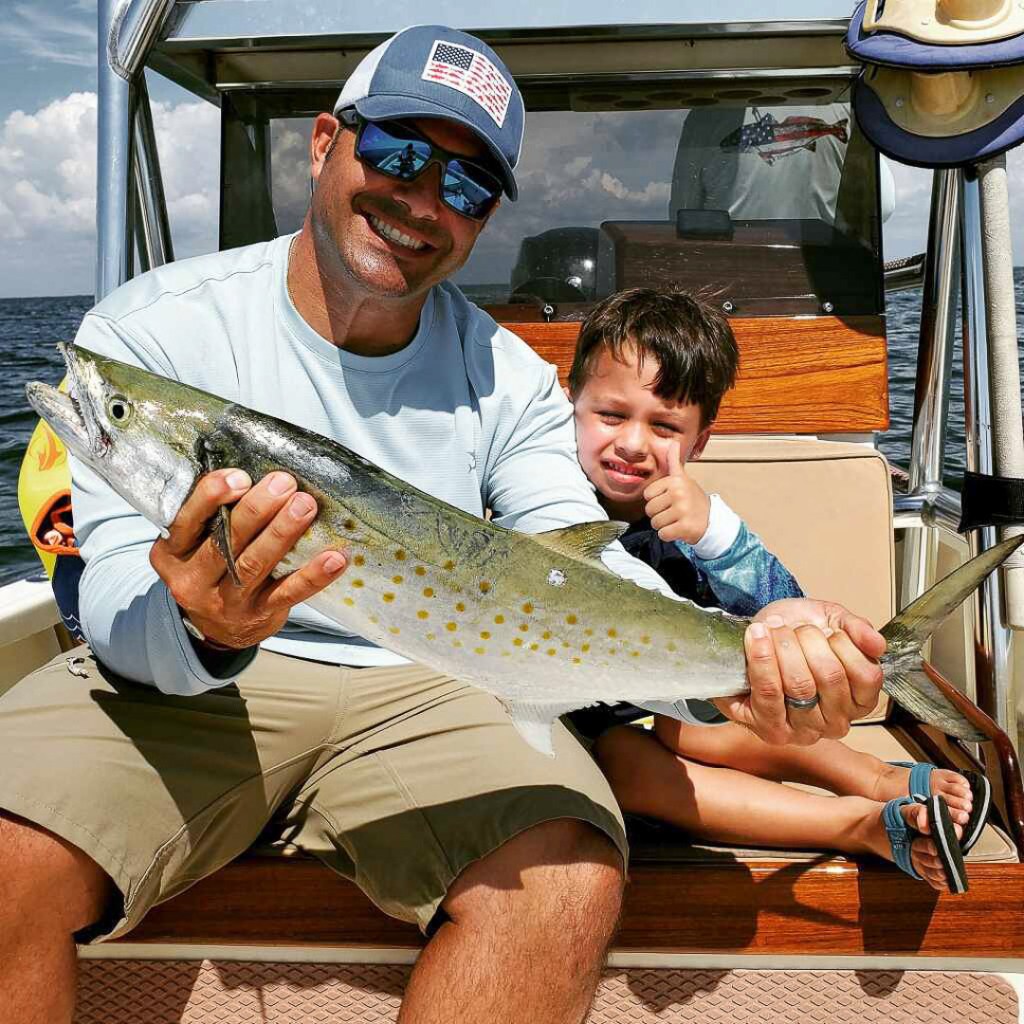
Too often, he’s guided men whose spouses and kids weren’t up for a full day of strenuous and challenging activity. Fishing’s not for everyone, but the way Miller sees it, maybe more people of all ages would give it a try if there was less fishing and more catching.
“After hearing from a lot of people that they left their families (at) home, I came up with a game plan for the day that could accommodate everyone on the boat,” Miller said. “I wanted to make it the most fun and let them catch the most fish possible.
“As much as Dad is interested in fishing, the family isn’t always into it as much. They want to go out for a couple of hours, catch some fish, let Mom take some pictures and have a good time together.”
Miller traces his beliefs to the days when his parents, Capt. Bill and Debbie Miller, would lay him in a picnic basket and carry him along on family fishing trips. He’s continued the tradition with his daughters Dylan, Taylor and Emily, but for anyone short of fishing know-how, Miller’s Family Fun Fishing concept guarantees lots of angling action and ample opportunity to learn the lessons necessary for ongoing enjoyment.
How it works
Pick a fishy area, such as a channel edge, rockpile, shallow reef or lush seagrass beds in about 4 to 8 feet of water. What you want is abundant life — in terms of numbers and diversity — so look for areas with plenty of cover for various predator species and the various crustacean and finfish forage they seek.

Favoring grassbeds, Miller anchors in a spot with good tidal current and heavily chums behind the boat to gather a fishbowl of species. During the warmer months, it draws the usual mix of speckled trout, Spanish mackerel, bluefish, jacks, ladyfish, lizardfish and small sharks.
A mix like that ensures everyone has a good shot at catching something, and diversity keeps the game interesting. The species mix may vary by location, but the same principle works anywhere in coastal waters.
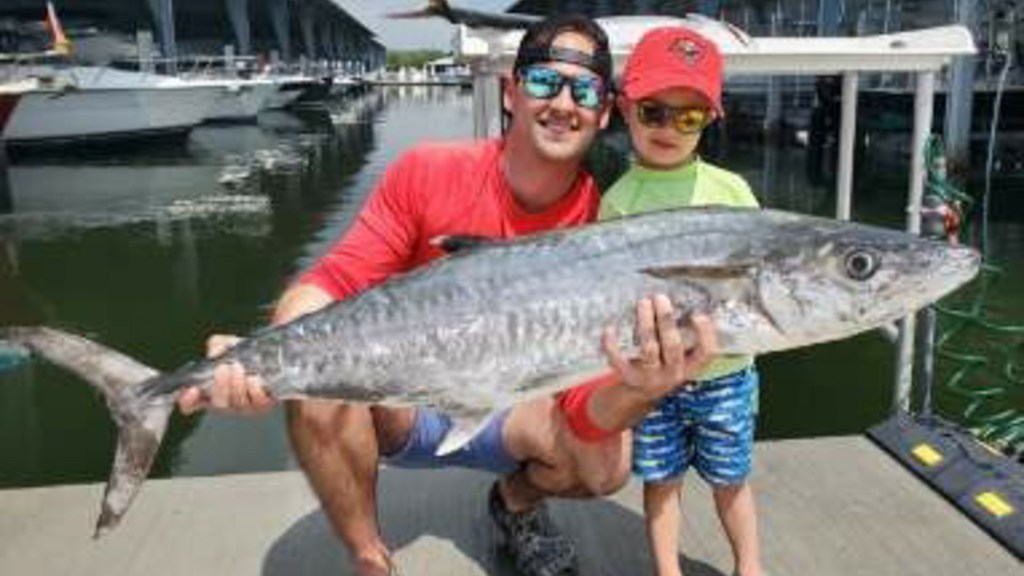
If Miller thinks his guests are up to a challenge, he might invest some time in larger sharks, cobia, kingfishers or tarpon. No problem if his anglers pass on such opportunities, but part of encouragement is giving folks the option of expanding when they’re ready.
Of course, close support/supervision is essential to making sure a beginner never feels like they’ve bitten off more than they can chew, so Miller and his mate Jason Bynum remain close. Sometimes, an angler just needs help holding/lifting the rod with a big fish. Ultimately, it’s about making sure every hookup brings a smile.
The right tactics
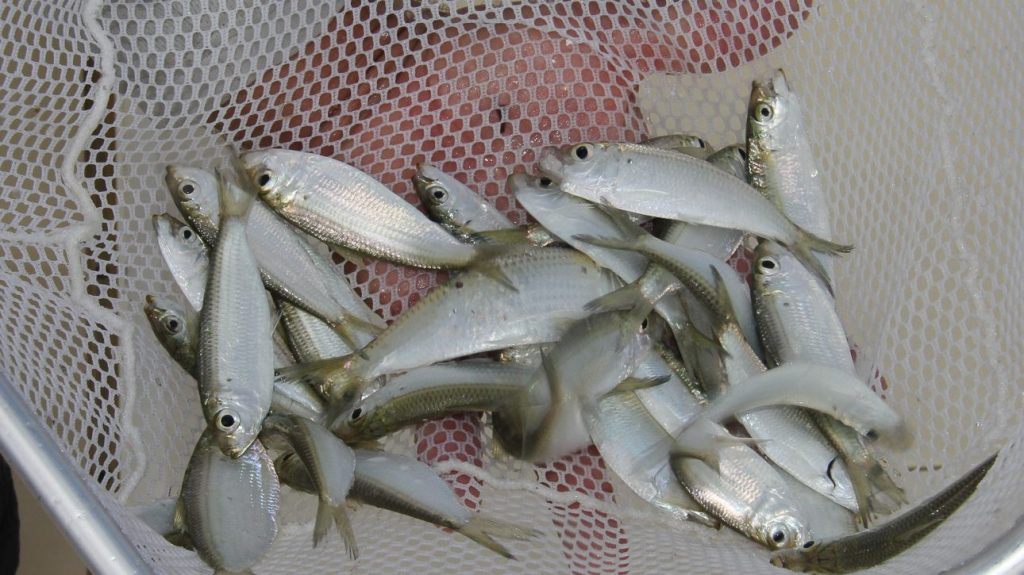
Miller finds that free lining live scaled sardines (aka whitebait or pilchards) or live shrimp into his chum line is the best way to keep the rods bent. Once he establishes a scent trail, anything living in the grass will rise to see what’s on the lunch menu. Chumming also calls in more mobile predators, so any cast might connect with a speedy Spanish mackerel, bluefish or high-jumping ladyfish.
Single-hook rigs — with a small split shot for stronger tidal periods — usually do the trick, but if Miller’s chumming effort finds the place hopping, he might tie on a double dropper rig to give his clients a shot at double headers. These simple rigs may comprise a pair of dropper loops tied on one leader, but you can also add a separate sliding leader to your main line.
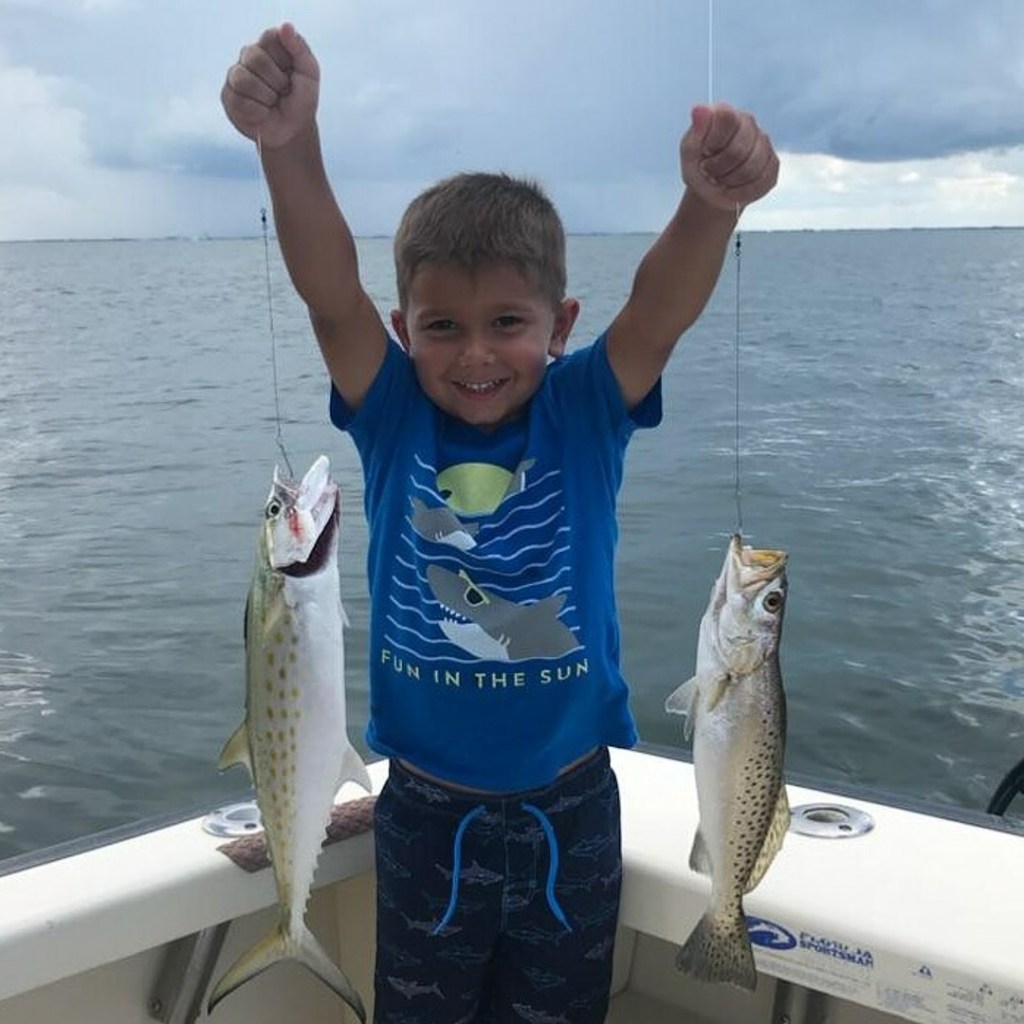
For the latter, tie a swivel to one end of a 12- to 14-inch leader with a hook at the other end. Run your main line through the swivel, then tie it directly to the swivel of a second leader measuring about 20 to 24 inches. This length difference keeps your baits separated, while the sliding leader setup keeps two larger fish from straining directly against one another and potentially pulling hooks.
In shallower areas, or during slower tidal periods, baits may burrow into the grass where they’re less likely to find a taker. This is a good time to switch to cork rigs. For one thing, a brightly colored float serves as a strike indicator — when the cork disappears, raise the rod tip and reel!
Also, popping or clacking-style corks offer the benefit of attracting trout, redfish, etc., by mimicking the sounds of fish feeding at the surface. This is a great way to break up the wait times between bites — let your beginning angler tug the cork and maybe even make a game out of seeing who can call up the next bite.
Whatever the game plan, make sure you don’t overwhelm or frustrate novice anglers with highly technical pursuits requiring physical skills and/or understandings that, in fairness, they simply haven’t yet developed.
If you use artificials, go with simple cast-and-wind options. No need to burden a beginner with lessons on properly walking a topwater plug or casting a fly rod. Think spoons, paddletail jigs or lipless crankbaits.
Points to consider
Miller has found that a successful Family Fun Fishing trip is as much about the don’ts as it is the do’s. Foremost, don’t leave new anglers with a negative impression of a sport that offers the potential for a lifetime of fun.
Keep It Close: “When you’re fishing with young kids, you want to fish close to the dock — 10 minutes max,” Miller said. “With youngsters under about 4, they’re only going to make it about an hour and a half. So, if you run 30 minutes away from the dock, by the time the kids are ready to go in, you’re going to burn them out on a (long) boat ride.
“If you bring them back wanting more, they’ll want to continue going. If you wait until they’re tired and worn out, you’ve ended the day on a bad note. The key is to get the kids to want some more.”
Simple Is Best: Adults might be willing to wait on a good trout, mackerel or shark bite, but little ones typically lack such patience, or even the comprehension of why that’s often necessary.
“Don’t get carried away with trying to do too much; it’s just good old-fashioned fishing that works best,” Miller said. “The main deal is keeping the kids busy
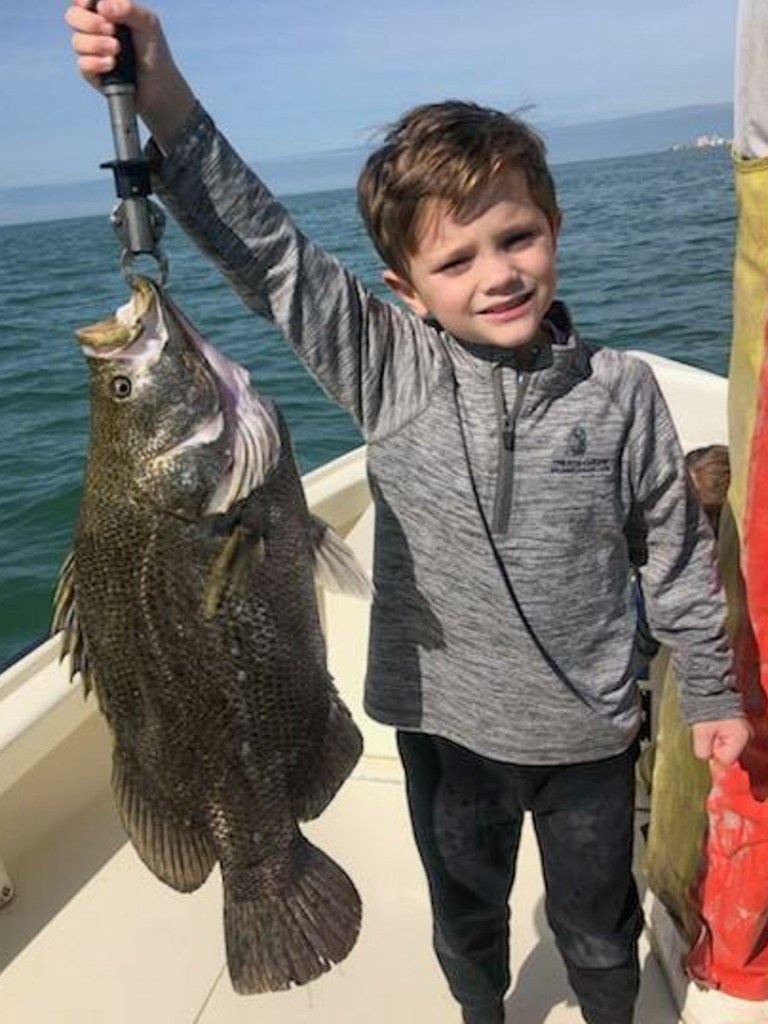
“Any young kid will tell you, when you put your hook in the water, a fish is supposed to bite it. They don’t want to sit there on the edge of the mangroves waiting for a 40-inch snook to bite. At a young age, they just don’t understand that kind of stuff.”
Age-Appropriate Equipment: “Get your kid a fishing rod that they can manage,” Miller said. “If you give a 40-pound little girl an 8-foot spinning rod with a 40-size reel, she’s going to be worn out. So, you want to downsize your tackle with smaller, lighter rods.”
Don’t Overdo It: Once the fishing starts, Miller pays close attention to energy and interest levels. Make sure everyone stays hydrated and sun-protected (sunscreen, hats, sun gaiters for the neck and face), and if you’re seeing more yawns than smiles, it’s time for a change. Maybe take a short run to look at dolphins or wading birds, or maybe it’s time to wrap up for the day.
Let Them Learn: Miller helps his anglers as needed, but he knows that doing everything but reeling in the fish actually deprives his anglers of the learning opportunity most truly seek. Basic casting technique and reel operation rank high on the list, but some novices may show interest in rigging tackle, baiting hooks and fish handling/conservation.
“Whenever you’re doing something, kids are watching, so don’t just tie a hook on — sit down and show them how you do it,” Miller said. “If they don’t want to pay attention, then get them next time.
“But if you make an attempt to show them every little piece of the day, they enjoy it more. They want to get involved and be a part of it.”
Miller finds meaningful engagement predicated on respectful delivery: “Don’t talk to kids like they’re stupid; talk to them like they’re a person. If you do that, they’ll listen and understand.”
Respect The Learning Curve: Not every adult has had the opportunity to learn angling skills. That’s why Miller keeps it relaxed and low-key.
“I get parents all the time who want to fish, but they’re working and they really don’t know much about fishing,” Miller said. “That’s why I started doing the Family Fun Fishing trips. You don’t have to know anything. The kids come on the boat and my deck mate and I take care of them and everybody has a good time.”





